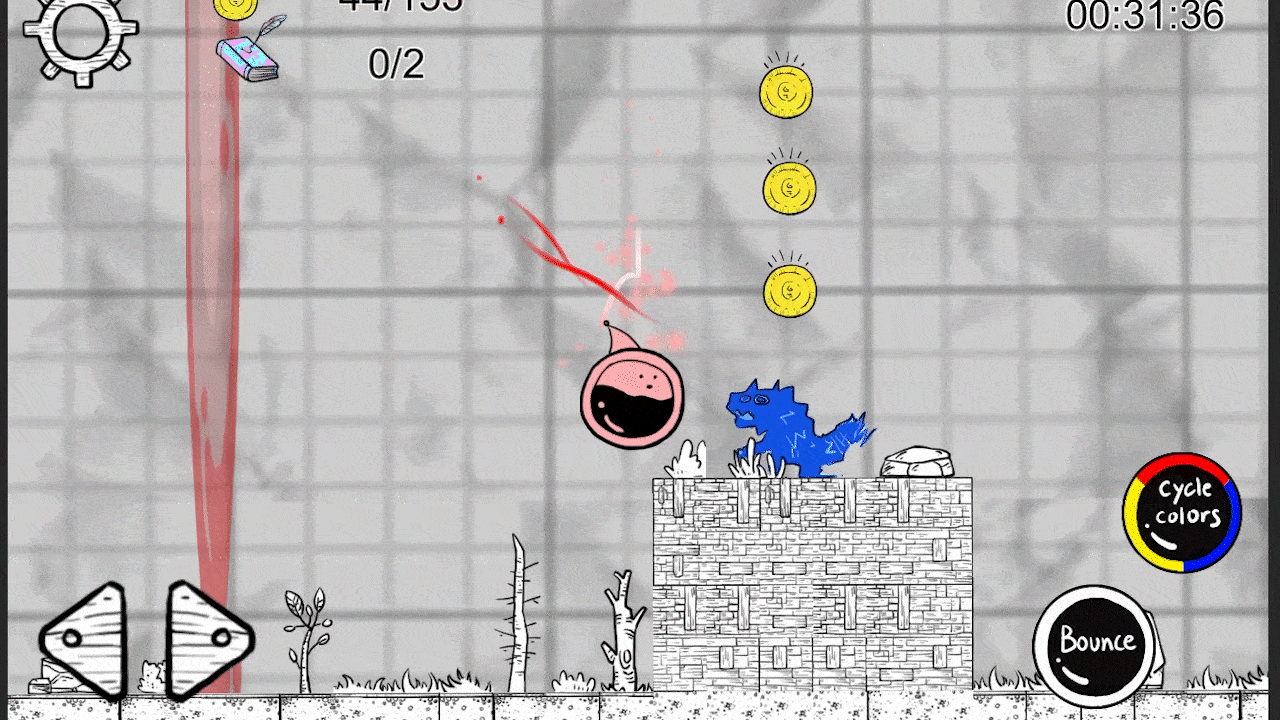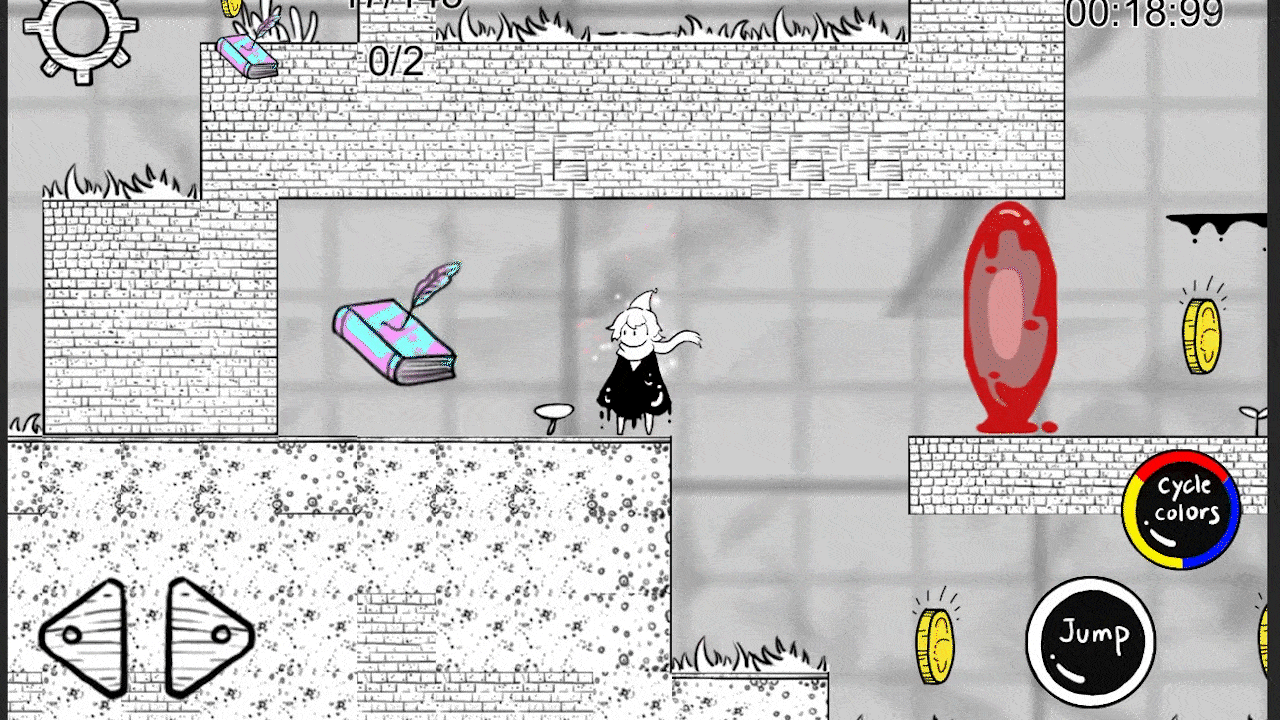
Inkky
Inkky is an action platformer wherein you change your color at various points to navigate the world to save the world inside a doodle book.
Role
Generalist Programmer
Engine
Unity
Platform
Android
Development Time
3 Months (September, 2021 - November, 2021)
Team Size
6 People
Game Trailer
Game Mechanics
Color Changing

The player can change the main character’s (Inkky) color. This can be done by:
-
First picking up an ink well with the new ink color
-
A new button named “Cycle Colors” will pop up.
-
An animation will be played while the character’s color changes
The player now will be a different color. The player can now interact with white colored objects, and objects with the same color as the current color of the character.
Ball Bouncing

The player can bounce while in the ball form by using the Bounce button show on the lower right side of the screen.
The bounce works as follows:
If the player hits the bounce button while at the peak of the movement, they will slam with a force boosted to 150%, enabling them to jump higher at a faster rate.
If the player hits the bounce button at any other point of the movement they will bounce with the normal bounce force.
Enemy Turning

The enemies of the game represent a threat that can be mitigated.
All enemies of the game are from a specific color, and they can be turned into friendly NPCs when the player jumps on top of them, while being the same color as the enemies.
If they're different colors the enemy will cast red “energy” towards the player and pushes the player away.
Enemy Turning

This is optional, used for storytelling. Scattered throughout the levels there are several books that interact with the player when touched.
A window will pop up with some text describing the story of Inkky, and the icons of the secrets is updated on the top left screen of the game.
Responsibilities
-
Create and maintain efficient game’s code base
-
Assess the technical scope of the game
-
Develop game assets that fulfill the rest of the development team’s needs
-
Work closely with artists and level designers
-
Perform testing
-
Perform integration testing
-
Document game technical design specifications
Post Mortem
What went well:
-
Team onboarding was successful
-
Ambitious goal for physics that were fulfilled
-
Cutting aspects of project that were out of scope.
-
Deep discussions by level designers before coming to final decisions
-
Cross-discipline communication went well
-
No crunch
-
Holding members accountable for task completion
-
Low stress work environment
What went wrong
-
Some gameplay moments were fine-tuned, but not nearly enough for delivering the best game feeling to the player.
-
Overflowing tasks for programmers
-
Scrum board management and task details
-
Spaghetti code
-
Ball character movement was tricky to perfect
-
Unplanned tasks were generated mid-sprint
-
Not enough playtesting early on
What we learned
-
How to join a team effectively and rapidly with an ongoing structure and development process, to work and create value as soon as possible.
-
Consistent and sufficient communication skills to convey to the rest of team what was being done, and what was possible in terms of development.
-
Technical skills using Unity
-
Validation of art assets
-
Estimating the scope of a game
-
There’s never enough time


